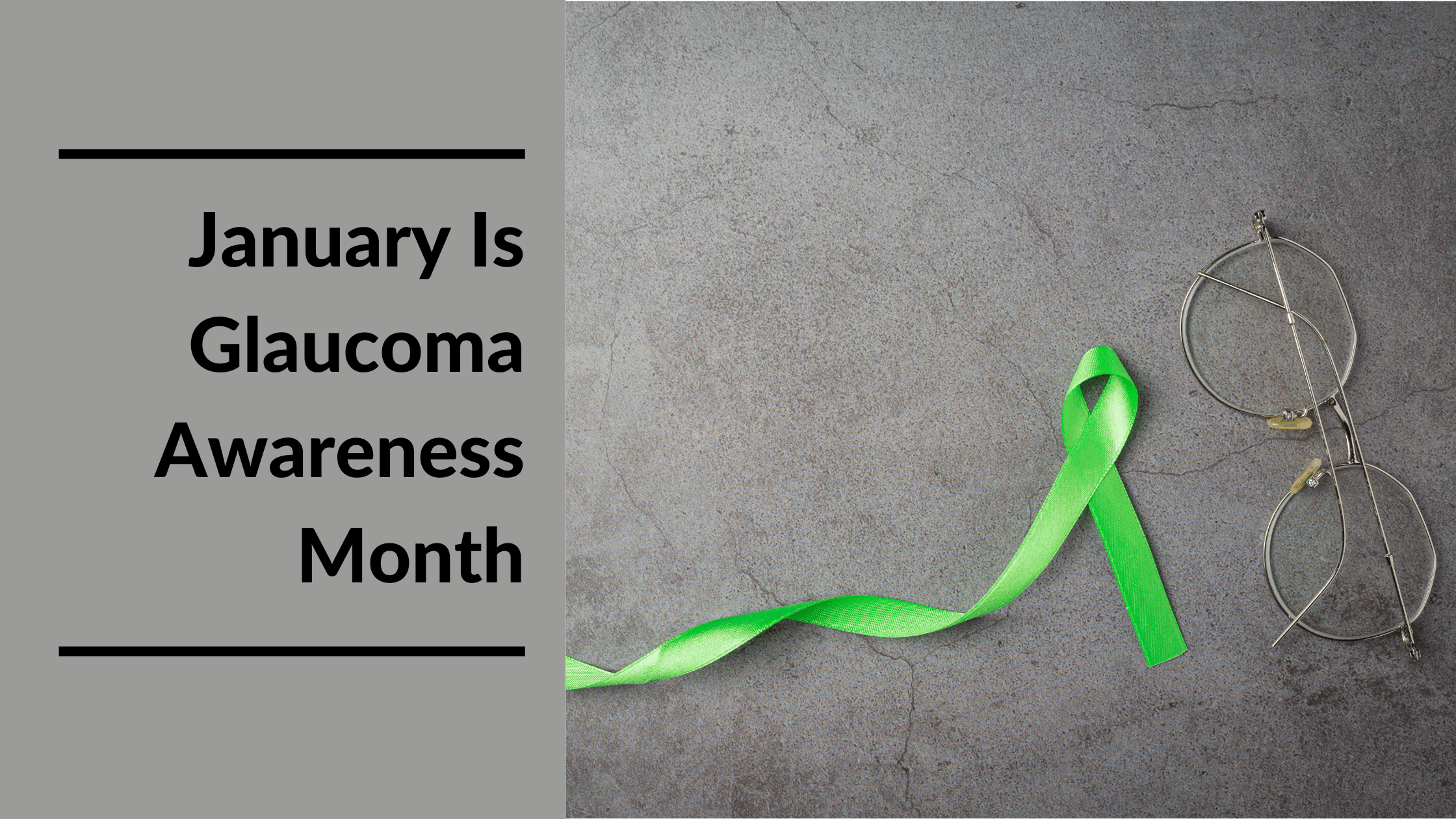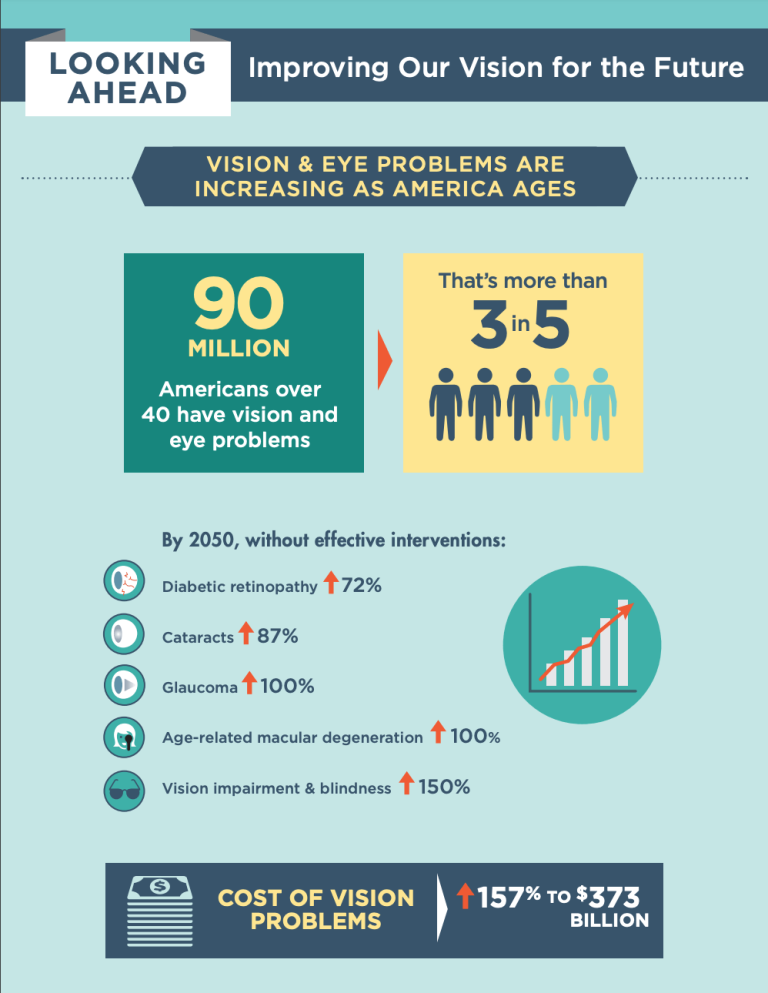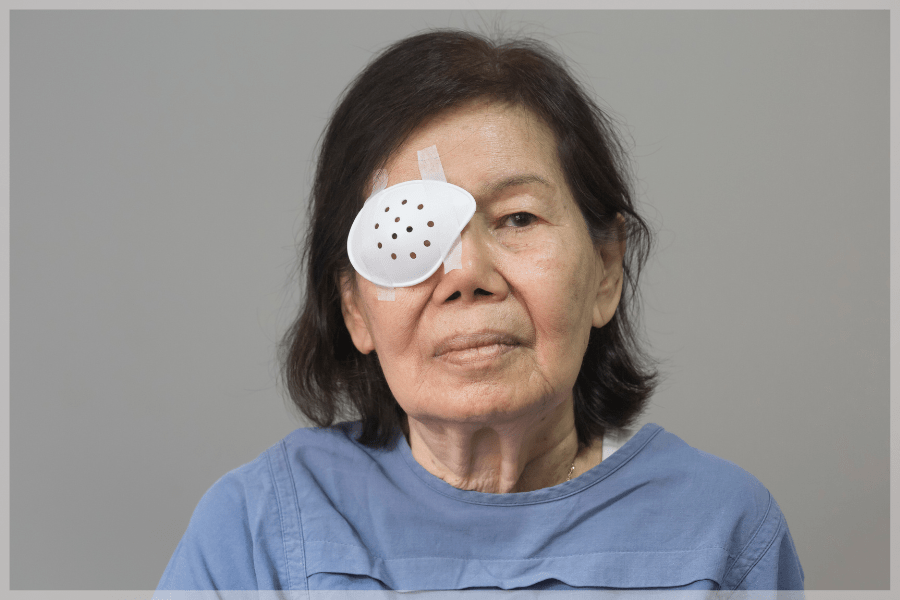
Glaucoma Awareness Month aims to educate people by driving awareness about the signs of glaucoma and ways to prevent it. As the US population ages, many experts fear that blindness will become a more significant public health issue. Keep reading to learn more.
Updated December 27, 2022
What Is Glaucoma Awareness Month?
Glaucoma is the leading cause of permanent blindness, affecting over 3 million US adults. Sadly, the damage caused by this disease is irreversible. As the population ages, experts fear that blindness will become an even more significant problem, with data from the National Eye Institute estimating 4.2 million cases by 2030.
One way to avoid this is by promoting awareness about this disease and informing the public about how they can protect their vision. For this reason, Glaucoma Awareness Month aims to educate people by driving awareness about the signs of glaucoma and ways to prevent it.
Glaucoma is often called “the sneak thief of sight” because, in many cases, someone may not realize they have glaucoma until it’s too late. The symptoms often go undetected until the disease reaches a critical point. Sometimes, patients can lose as much as 40% of their eyesight before realizing they have glaucoma.
What Is Glaucoma?
The Glaucoma Research Foundation (GRF) defines glaucoma as a “group of eye diseases that gradually steal sight without warning.” While middle-aged and older adults are the most susceptible, this disease can develop at any age.
Glaucoma affects the optic nerve, which transmits images from the eye to the brain. Vision loss occurs as the disease progresses, and the nerve becomes more damaged.
While there is no cure, medicine or surgery can slow or stop vision loss. However, the proper treatment depends on various factors, including which type of glaucoma.


What Are The Different Types Of Glaucoma?
There are many types of glaucoma, such as:
- Uveitic glaucoma
- Traumatic glaucoma
- Congenital glaucoma
- Pigmentary glaucoma
- Neovascular glaucoma
- Pseudoexfoliative glaucoma
- Iridocorneal endothelial syndrome
In some cases, eye pressure, optic nerve damage, and vision loss occur due to a separate disease known as secondary glaucoma. Because signs and symptoms vary based on each type, it can be difficult to catch before it’s too late.
Open-angle and angle-closure glaucoma are the most common forms of glaucoma. They are characterized by intense eye pressure, which damages the optic nerve, leading to vision loss.
However, people can still lose their eyesight even with normal intraocular pressure levels. When this happens, it is known as normal-tension glaucoma. Below is more information about the three most common forms of glaucoma.
Open-Angle Glaucoma
Open-angle glaucoma affects 90% of patients with this disease, making it the most prevalent type. Also known as primary or chronic glaucoma, open-angle glaucoma occurs when the angle where the iris and cornea converge becomes enlarged. As the drainage canals in the eye are gradually obstructed, eye pressure increases.
Besides peripheral vision loss, open-angle glaucoma exhibits almost no signs or symptoms. Moreover, because it progresses slowly, many people only realize something is wrong once significant damage occurs. For this reason, routine vision exams are essential for early detection and treatment.
Angle-Closure Glaucoma
Angle-closure glaucoma develops due to eye pressure caused by obstructed drainage canals. It is characterized by narrowing the angle where the iris and cornea meet.
Unlike open-angle glaucoma, angle-closure glaucoma progresses rapidly, making the signs much more noticeable. Once symptoms become apparent, patients must seek medical help as soon as possible.
Normal-Tension Glaucoma
Normal-tension glaucoma occurs despite normal levels of pressure in the eye. Researchers remain unsure why this type of glaucoma develops. Still, regular vision checks can help catch it before it progresses further.

What Are The Risk Factors Of Glaucoma?
Some groups have a higher risk of developing glaucoma than others, including:
- Diabetics
- Older adults 60 and older
- Seriously nearsighted people
- People with a family history of glaucoma
- People of Latino, Black, or Asian descent.
Glaucoma is the number one cause of vision loss for Black older adults. In addition, this disease is six to eight times more likely to affect Black seniors than their Whtie counterparts. Similarly, older Latinos have a similar risk of developing this disease.
How To Lower Your Risk Of Glaucoma
According to the World Health Organization (WHO), glaucoma is the second-highest cause of global blindness. In the US alone, glaucoma accounts for 9% to 12% of all blindness cases.
Glaucoma Awareness Month highlights the importance of proactivity and protective measures to lower the risk of glaucoma. Although there is no way to prevent this disease from developing, you can take steps to protect your vision.
Routine Eye Exams
Regular eye exams and early detection are the surest way to keep glaucoma from progressing. Comprehensive assessments are essential at every age, though the frequency varies based on risk, age, and other factors. However, the American Academy of Ophthalmology suggests:
- Five to ten years for individuals under 40.
- Two to three years for 40- to 54-year-olds.
- One to three years for adults between 55 and 64.
- One to two years for adults 65 and older.
Of course, people in the high-risk category should test more frequently.
Understand Your Family History
People with a genetic disposition for eye problems have a higher risk of developing glaucoma. Talk to your doctor about routine exams if you have siblings, parents, or other relatives with this disease.
Use Medicated Eyedrops
Glaucoma eye drops are available as a prescription. They can dramatically lower the chance of elevated eye pressure becoming glaucoma. However, for these to work, you must use them regularly.
Wear Eye Protection
Eye injuries can also increase your risk of glaucoma. Always wear goggles, glasses, and other protective eyewear when using power tools or engaging in high-speed sports like tennis, racketball, and similar activities.
Exercise Regularly
Physical activities, like aerobic exercise, prevent (or slow) glaucoma by improving blood circulation and lowering risk factors like blood pressure and diabetes. It also reduces stress, which can contribute to eye pressure.
Eat A Balanced Diet
Research has found that people who consume more leafy greens have a 20% to 30% lower chance of developing glaucoma. This is because these foods contain nitrate converted into nitric oxide, which promotes blood flow and helps control eye pressure.
Protect Your Vision During Glaucoma Awareness Month
Glaucoma is a serious condition affecting millions of people worldwide. Since there is no cure, early detection is the most effective way to avoid permanent vision loss. So during National Glaucoma Awareness Month, make sure you and your loved ones are up-to-date on vision screenings.
Additionally, here are a few ideas to spread awareness about Glaucoma Awareness Month:
- If you have been diagnosed with glaucoma, talk to your friends and family about it.
- Share informational infographics and other resources through social media.
- Order a complimentary educational booklet for yourself or somebody else.
- Participate in awareness events, fundraisers, and other local activities.
- Watch and share educational videos and webinars.

MeetCaregivers Supports Glaucoma Awareness Month
Vision loss can make it difficult for seniors to maintain their independence. If your aging parent needs assistance with transportation, activities of daily living, or something else, we can help.
A qualified in-home caregiver can give you peace of mind and allow your loved one to age gracefully in place. Find a caregiver today, or call 1 (888) 541-1136 to learn about hiring a caregiver with MeetCaregivers.
Visit our Blog for more resources for seniors and caregivers.
- “Glaucoma Awareness Month.” National Eye Institute, U.S. Department of Health and Human Services, www.nei.nih.gov/learn-about-eye-health/resources-for-health-educators/glaucoma-resources/glaucoma-awareness-month
- “Glaucoma Awareness Month.” Eye Care, www.uclahealth.org/eye/glaucoma-awareness-month
- Glaucoma Research Foundation. (2022, May 20). Can Exercise Lower Eye Pressure? Can Exercise Lower Eye Pressure? | glaucoma.org. Retrieved December 27, 2022, from https://glaucoma.org/can-exercise-lower-eye-pressure/
- “January Is Glaucoma Awareness Month.” Glaucoma Research Foundation, www.glaucoma.org/news/glaucoma-awareness-month.php
- Mayo Clinic Staff. “Glaucoma.” Mayo Clinic, Mayo Foundation for Medical Education and Research, 23 Oct. 2020, www.mayoclinic.org/diseases-conditions/glaucoma/symptoms-causes/syc-20372839
- “Types of Glaucoma.” Glaucoma Research Foundation, www.glaucoma.org/glaucoma/types-of-glaucoma.php
